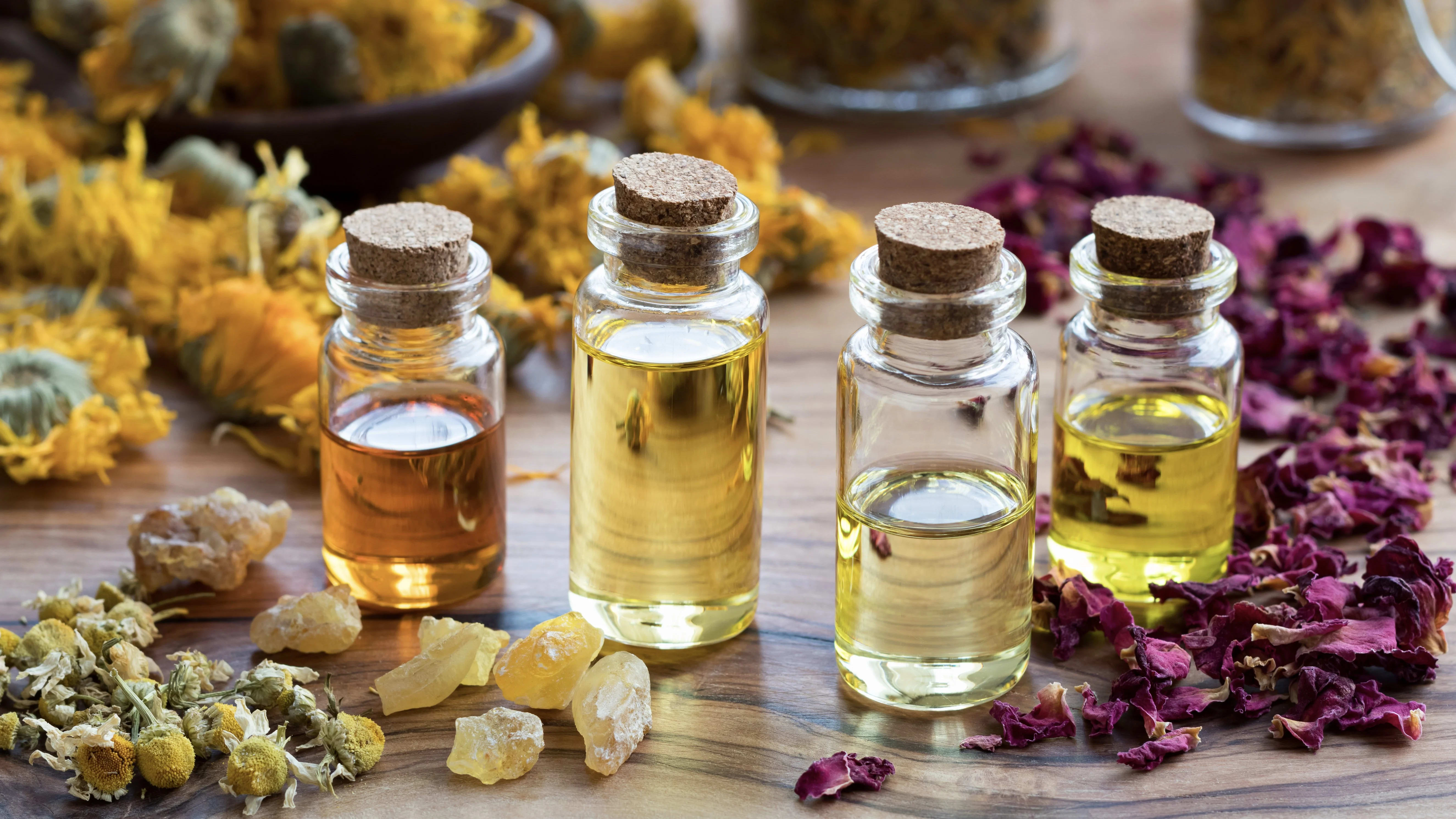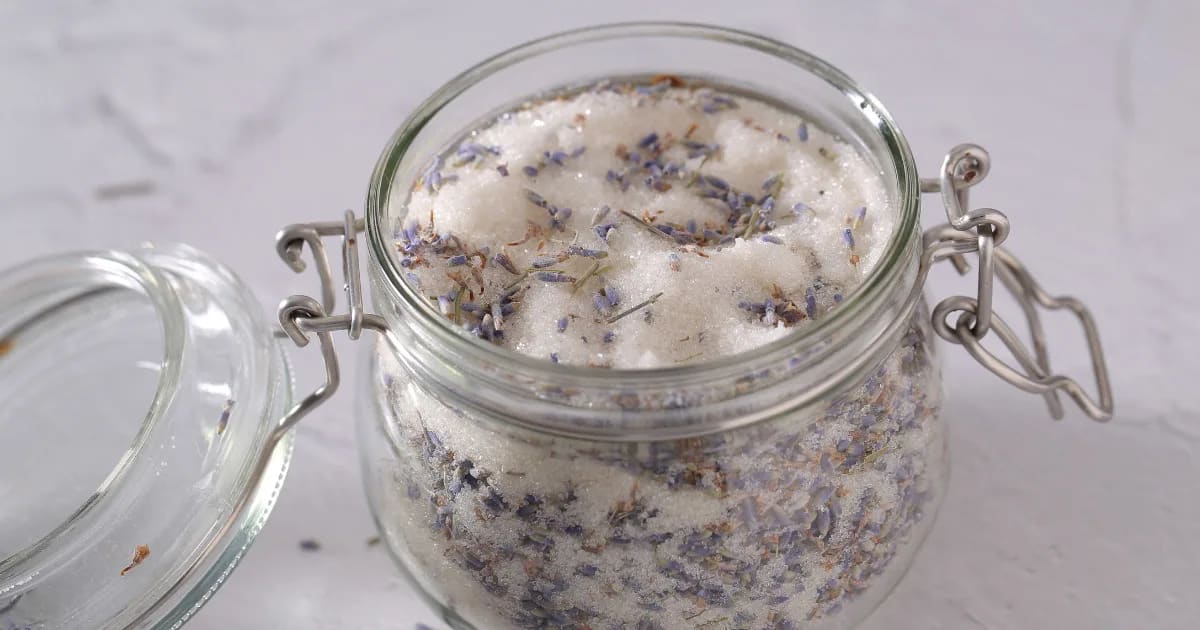How to Make DIY Allergy Relief Roller Blends for Sinus Support

Moving with the Rhythm of Nature
Change is one of nature’s most constant rhythms, buds opening, winds shifting, sunlight lengthening or softening with the seasons. And yet, even the most beautiful changes can feel destabilizing.
During allergy season, the transition of seasons stirs pollen in the air. And it stirs our systems, too. As the world slowly warms and awakens (or cools and quiets), we sometimes struggle to stay aligned. With the sudden abundance of pollen, our immune system can overreact and cause allergy symptoms.
What if the answer isn’t to fight the shift, but to meet it with balance?
Balance doesn’t mean resistance. It means resilience. It’s the act of listening inward while the world moves around you, of finding ways to soothe the system, regulate the breath, and support your body as it navigates transitions.
In this post, we’ll explore how to craft allergy relief roller blends with essential oils to help you stay balanced in body, mind, and spirit.
You’ll learn about six essential oils I turn to for allergy relief, and use them to make three roll-on blends:
Balsam Fir Immune Calming Roller Blend
Plai Essential Oil Roller for Sinus Headaches
Eucalyptus Congestion Calming Roll-On
These DIY roller bottle recipes are simple, portable, and effective tools for everyday balance.
Whether you’re waking up with a runny nose or navigating full-blown hay fever symptoms, these recipes can help you find relief and stay balanced with the rhythms of nature. (Want to go deeper into the nature of allergy symptoms and natural tips for relief? See my recent deep dive on Seasonal Allergies.)
6 Essential Oils to Use for Allergies
Essential oils are highly concentrated plant extracts, rich in the very compounds that help plants defend themselves, heal, and thrive in their environments. Linalool, for example, is found in lavender, and 1,8-cineole is prominent in eucalyptus.
When used thoughtfully, these same compounds can guide us to relief in gentle, powerful ways.
Many essential oils can help calm inflammation, reduce swelling in the sinuses, and ease the immune system’s overreaction to allergens. Others act as natural decongestants, helping to clear stuffy airways, break up mucus, and make breathing feel easy and comfortable.
While there are a lot of oils that offer allergy relief, here are several I love using in roller blends for easy breathing.
Balsam Fir Essential Oil
Abies balsamea
Ease coughing and sneezing spasms (Salehi et al. 2019)
Reduce histamine reactions (Salehi et al. 2019)
Prevent symptom flare-ups (Salehi et al. 2019)
Lavender Essential Oil
Lavandula angustifolia
Modulate overactive immunity (Kuriyama et al. 2005)
Ease respiratory spasms (Mazzanti et al. 1998)
Calm tension from allergy stress (Peana et al. 2002)
Eucalyptus Essential Oil
Eucalyptus radiata
Break up mucus & clear sinuses (Juergens et al. 2003)
Ease headaches caused by congestion (Silva et al. 2003)
Calm sinus inflammation (Juergens et al. 2003)
Safety Note: Eucalyptus is a strong essential oil (due to the presence of 1,8-cineole), and we prefer to avoid it for children between 5–10 years old. We’ve included substitution suggestions in the recipes below.

Hemlock Essential Oil
Tsuga canadensis
Support the lungs & ease congestion (Chen et al. 2014; Boyd & Sheppard, 1970)
Reduce inflammation in nasal passages (Salehi et al. 2019)
Support relaxation during stress (Chen et al. 2014)
Plai Essential Oil
Zingiber cassumunar
Cool inflammation in irritated sinuses (Leelarungrayub, Manorsoi & Manorsoi, 2017)
Support immune balance (Leelarungrayub, Manorsoi & Manorsoi, 2017)
Calm sinus-related headaches (Leelarungrayub, Manorsoi & Manorsoi, 2017)
Tea Tree Essential Oil
Melaleuca alternifolia
Reduce histamine reactions (especially skin flare-ups) (Koh et al. 2002)
Calm inflammation (Guimarães et al. 2013)
Support immune balance & resilience (Budhiraja et al. 1999)

A Note on Safety
Always dilute your essential oil before applying to the skin. Roller blends are usually made with a base of carrier oil like jojoba oil (Simmondsia chinensis) or sweet almond oil (Prunus amygdalus var dulcis). Do a patch test first, especially if you have sensitive skin, and keep essential oils away from your eyes and mucous membranes.
Also, be sure you're working with pure essential oils. Synthetic oils won't offer the same relief, and may make your seasonal allergy symptoms worse. Here are some tips for ensuring you have pure essential oil.
You’ll see safe substitution suggestions for children in the recipes below. These are for kids ages 5–10. For younger children, we prefer to use gentle, aqueous hydrosols rather than essential oils. (Learn more about hydrosols.) For a more thorough exploration of using oils safely for kids, visit this post on our blog.
Ready to roll? Let’s make essential oil blends that turn allergy season into an invitation to slow down, breathe deeper, and care for yourself.
DIY Allergy Essential Oil Roller Blends
Rolling on an essential oil blend is one of the easiest, most comforting ways to get the natural relief of aromatherapy anytime, anywhere.
With a swipe across your chest, over your pulse point, or on the back of your neck, you can bring fast, targeted relief right where it’s needed most. They’re portable, ready to go wherever you do, tucking easily into a pocket, bag, or bedside drawer.
Balsam Fir Immune Calming Roll-On
This is an everyday allergy relief blend for calming the immune system and reducing histamine reactivity. It also has the benefit of relaxing your nervous system, which is crucial during allergy season, because stress can play a big role in making symptoms worse. I treat this essential oil roll on as preventive. Use it regularly to help keep your immune system balanced, soothe stress, and stop reactions before they start.
Ingredients
10 ml Sweet Almond Oil (Prunus amygdalus var dulcis)
4 drops Balsam Fir Oil (Abies balsamea)
2 drops Lavender Oil (Lavandula angustifolia)
1 drop Tea Tree Oil (Melaleuca alternifolia)
Directions
Add the essential oils to a 10 ml roller bottle. Fill the bottle the rest of the way with carrier oil. Roll it onto your pulse points and neck as needed.
For Children
10 ml Sweet Almond Oil (Prunus amygdalus var dulcis)
2 drops Balsam Fir Oil (Abies balsamea)
1 drops Lavender Oil (Lavandula angustifolia)
1 drop Tea Tree Oil (Melaleuca alternifolia)
Substitutions
For Balsam Fir: Hemlock (Tsuga canadensis)
For Lavender: Coriander (Coriandrum sativum)
For Tea Tree: Sweet Marjoram (Origanum majorana)
Plai Roll-On for Sinus Headaches
When allergies bring on the heavy fog of a headache, with tight temples, aching eyes, and that pressure behind your brow, this blend offers cool, clarifying comfort. It weaves together oils that gently calm inflammation, release tension, and open the breath.
If you’re not familiar with plai, it’s a cooling cousin of ginger from Thailand, and is especially helpful for deep-seated aches and tension. (It’s also great for digestion.) Roll this blend on at the first sign of a sinus headache.
Ingredients
10 ml Sweet Almond Oil (Prunus amygdalus var dulcis)
3 drops Plai Oil (Zingiber cassumunar)
2 drops Lavender Oil (Lavandula angustifolia)
2 drops Eucalyptus Oil (Eucalyptus radiata)
Directions
Add the essential oils to a 10 ml roller bottle. Fill the bottle the rest of the way with carrier oil. Roll it onto your pulse points and neck as needed.
For Children
10 ml Sweet Almond Oil (Prunus amygdalus var dulcis)
2 drops Plai Oil (Zingiber cassumunar)
1 drop Lavender Oil (Lavandula angustifolia)
1 drop Lemon Oil (Citrus limon)
Substitutions
For Plai: Ginger (Zingiber officinale)
For Lavender: Coriander (Coriandrum sativum)
For Eucalyptus: Peppermint (Mentha × piperita)
Eucalyptus Congestion Calming Roll-On
Allergies can make breathing feel like a struggle, with sinus congestion and chest tension. This combination of fresh, foresty oils can help clear your head, opening blocked airways and reducing inflammation in your sinuses.
Roll this blend onto your chest or neck, and let each breath lead you back to clarity. I like pairing this one with a sinus-clearing inhaler.
Ingredients
10 ml Sweet Almond Oil (Prunus amygdalus var dulcis)
3 drops Eucalyptus Oil (Eucalyptus radiata)
2 drops Hemlock Oil (Tsuga canadensis)
1 drop Tea Tree Oil (Melaleuca alternifolia)
Directions
Add the essential oils to a 10 ml roller bottle. Fill the bottle the rest of the way with carrier oil. Roll it onto your pulse points and neck as needed.
For Children
10 ml Sweet Almond Oil (Prunus amygdalus var dulcis)
2 drops Lavender Oil (Lavandula angustifolia)
1 drop Hemlock Oil (Tsuga canadensis)
1 drop Tea Tree Oil (Melaleuca alternifolia)
Substitutions
For Eucalyptus: Peppermint (Mentha × piperita)
For Hemlock: Balsam Fir (Abies balsamea)
For Tea Tree: Sweet Marjoram (Origanum majorana)
Download the Allergy Relief Toolkit!
If you’ve ever felt like your breath is at odds with the beauty around you, you’re not alone. The Allergy Relief Toolkit: DIY Remedies & Breathing Support Checklist is here to help you reconnect with balance.
Inside, you’ll find simple, natural tools for easing congestion, calming inflammation, and restoring a sense of calm when your immune system feels overwhelmed. With soothing recipes and an easy-to-follow checklist, this guide is designed to support your body gently, effectively, and holistically.
Download the Allergy Relief Toolkit and find support that meets you where you are!
My Takeaway
The changes of allergy season have a way of pulling us out of rhythm, of making us feel at odds with the very world we love. But in caring for ourselves with intention, we can return to harmony. These simple roller blends are small rituals, gentle ways of saying yes to your body’s needs and yes to nature’s wild, shifting beauty.
I’ve found that when I reach for these blends, pausing to breathe in something grounding and supportive, it reminds me I am part of the natural world, not separate from it. And even when the wind carries pollen and challenge, it also carries wisdom, healing, and inspiration.
REFERENCES
Boyd EM, Sheppard P. (1970) Nutmeg oil and camphene as inhaled expectorants. Archives of Otolaryngology (Chicago) 92,4,372-378.
Budhiraja SS, Cullum ME, Sioutis SS, Evangelista L, Habanova ST. (1999) Biological activity of Melaleuca alternifola (Tea Tree) oil component, terpinen-4-ol, in human myelocytic cell line HL-60. Journal of Manipulative and Physiological Therapeutics. 1999 Sep;22(7):447-53. doi: 10.1016/s0161-4754(99)70033-3. PMID: 10519561.
Chen N, Sun G, Yuan X, Hou J, Wu Q, Soromou LW, Feng H. (2014). Inhibition of lung inflammatory responses by bornyl acetate is correlated with regulation of myeloperoxidase activity. Journal of Surgical Research 186, 436-445.
Guimarães, A.G., Quintans, J.S.S. and Quintans-Júnior, L.J. (2013) Monoterpenes with analgesic activity – a systematic review. Phytotherapy Research 27, 1-15.
Juergens, U. R., Dethlefsen, U., Steinkamp, G., Gillissen, A., Repges, R., & Vetter, H. (2003). Anti-inflammatory activity of 1.8-cineol (eucalyptol) in bronchial asthma: a double-blind placebo-controlled trial. Respiratory medicine, 97(3), 250–256. https://doi.org/10.1053/rmed.2003.1432
Koh, K. J., Pearce, A. L., Marshman, G., Finlay‐Jones, J. J., & Hart, P. H. (2002). Tea tree oil reduces histamine‐induced skin inflammation. British Journal of Dermatology, 147(6), 1212-1217.
Kuriyama, H., Watanabe, S., Nakaya, T., Shigemori, I., Kita, M., Yoshida, N., Masaki, D., Tadai, T., Ozasa, K., Fukui, K., & Imanishi, J. (2005). Immunological and Psychological Benefits of Aromatherapy Massage. Evidence-based complementary and alternative medicine : eCAM, 2(2), 179–184. https://doi.org/10.1093/ecam/neh087
Leelarungrayub, J., Manorsoi, J., & Manorsoi, A. (2017). Anti-inflammatory activity of niosomes entrapped with Plai oil (Zingiber cassumunar Roxb.) by therapeutic ultrasound in a rat model. International journal of nanomedicine, 12, 2469–2476. https://doi.org/10.2147/IJN.S129131
Mazzanti, G., Lu, M., & Salvatore, G. (1998). Spasmolytic action of the essential oil from Hyssopus officinalis L. var. Decumbens and its major components. Phytotherapy Research, 12(S1).
Peana, A.T., D’Aquila, P.S., Panin, F., Serra, G., Pippia, P. and Moretti, M.D. (2002) Anti-inflammatory activity of linalool and linalyl acetate constituents of essential oils. Phytomedicine 9, 721-726.
Salehi, B., Upadhyay, S., Erdogan Orhan, I., Kumar Jugran, A., L D Jayaweera, S., A Dias, D., Sharopov, F., Taheri, Y., Martins, N., Baghalpour, N., Cho, W. C., & Sharifi-Rad, J. (2019). Therapeutic Potential of α- and β-Pinene: A Miracle Gift of Nature. Biomolecules, 9(11), 738. https://doi.org/10.3390/biom9110738
Silva, J., Abebe, W., Sousa, S.M., Duarte, V.G., Machado, M.I.L. and Matos, F.J.A. (2003) Analgesic and anti-inflammatory effects of essential oils of eucalyptus. Journal of Ethnopharmacology 89, 277-83.






